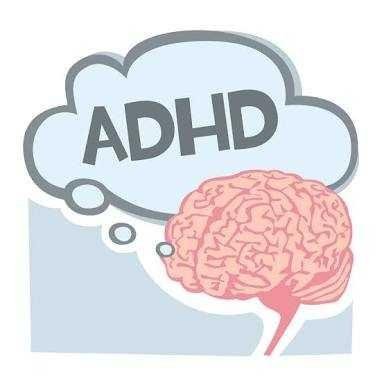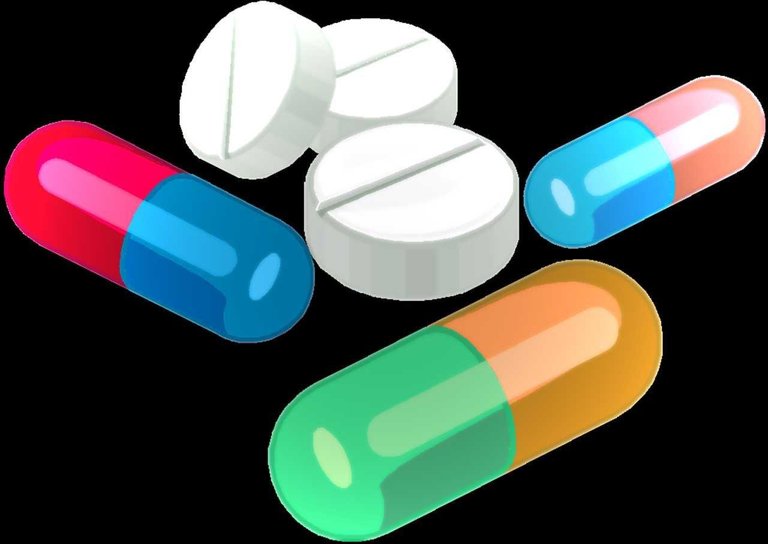Some people especially parents do think that children with ADHD will find it difficult to be successful in life because of their inattentive and hyperactive behaviours. I think that is not the case. I decided to write out this post to enlighten parents of such mind.

Attention deficit hyperactivity disorder is a psychological disorder that affects the behavioural pattern of people. The disorder can start right from their birth and continue till some certain stage throughout one's lifespan. However, it does not only affects little children but also adult. People with the disorder have problem with concentration on what they are doing, they get distracted easily. They have less ability to control their behaviour.
When talking about ADHD what come to some people mind is noise makers, too much active and students that disrupt class. The truth of the matter is that hyperactivity is just a part of ADHD and not the whole ADHD, as the case may be hyperactivity might not be relevant at all for some children because some children can be inattentive and hyperactive without having the disorder.
Statistics
5 percent of children in the US are diagnosed with this disorder according to a survey that was conducted by the American Psychiatric Association (APA).
In 2011, a survey was published by the Centers of Disease Control and Prevention (CDC), the researchers figured out that approximately 11 percent of chilldren of age 4 to 17 were diagnosed with this disorder in the United States.
According to the research by the Center of Diseases Control and Prevention, it had shown that boy are more likely to be diagnosed with ADHD than girls.
Types of ADHD
There are three types of ADHD. This type of ADHD a child has depend on the sign or symptoms of the he/she exhibits. The symptoms can be grouped into two which are inattention and hyperactivity or impulsivity. It is necessary to note that signs or symptoms can change as the child grow older. The types of ADHD are:
Predominantly Inattentive ADHD
A child with this type of ADHD is more like to be inattentive than impulsive or hyperactive.
This type of ADHD has more symptoms of inattention than impulsivity and hyperactivity that is, people with this type of ADHD find it difficult to pay attention to what they are doing. They are easily distracted but don't really struggle with hyperactivity at times. Some characteristics of people with this type of ADHD includes:
Difficulty in concentration: People with this type of ADHD find it difficult to pay attention to what they are doing. They get easily distracted
Boredom: People suffering from this disorder get bore easily.
Inability to listen: For the fact that they don't pay attention to what they are doing, this makes their mind channelled to another things and this make it difficult for them to listen.
Difficulty in Organizing Thought and learning new thing: They find it difficult to organize their thought and learn new things
Predominantly hyperactive-impulsive ADHD
As its name implies, this type of ADHD shows hyperactive and impulsive symptoms. People with this disorder hardly have problem with inattention. They find it difficult to sit still in class and control their behaviour. They are prone to injury and accident due to their behavior and restlessness. Some characteristics of people with hyperactivity and inpulsivity are:
Talkative: People with this type of ADHD talk a lot. They can talk for the whole day with getting tired.
Impatience: They lack patience and they are too forward. They don't always wait for their turn
Difficult in sitting still: They find it difficult to sit for a long period of time. They are restless. They often get involved in activities such as jumping, running and climbing.
Impulsion: They act quickly on something without thinking of the consequences of such actions.
Combination ADHD
Symptoms of people with the types of ADHD don't fall within the first or the second type of ADHD. Instead, It is the combination of symptoms of the first and second types of ADHD.
Though, almost everybody with or without this disorder has some degree for inattention, hyperactivity and impulsivity. But it tends to be more severe in the case of children with the disorder. This behaviours have negative effects on all areas of their life.
Causes of ADHD
Scientists haven't figure out the causes of ADHD. However, there are some factors that can contribute to the development of this disorder, such as:
Genes: This disorder can be hereditary in nature. It can be passed from one family member to the other, especially from pregnant woman to unborn child. Scientists have figured out that a child with ADHD is likely to have had a family member with the same disorder.
Brain injury: Problem of the brain such as brain tumor, stroke or blow to the head can make a child to be inattentive, hyperactive or impulsive.
According to a study conducted by the National Institute of Mental Health (NIMH), children who have experienced one traumatic experience or the other are likely to show signs or symptoms of the disorder.
Lead exposure: This is a toxic element that affect developing brain which can have negative effects children's behaviour. Though, it has been withdrawn from homes and school but it traces are alive. A study was conducted in 2009 in which scientists figure out that children that were diagnosed with ADHD have high-lead level.
Chemical Exposure: While too much exposure to lead can lead to ADHD. Scientists have also figure out that some chemical used in the production of material used in food packaging can also be a problem.
Researchers have linked polyfluoroalkyl chemicals and Phthalates to ADHD. Too much exposure of the chemicals especially in pregnancy woman can affect the brain of an unborn child which can lead to this disorder.
*Smoking, drinking in pregnancy*: Too much exposure to tobacco and alcohol can lead to ADHD. Researchers have figure out that fetuses exposure to tobacco and alcohol are more likely to have ADHD compare to those that are not.Sugar: Sugar is said to have impact on children behaviour. It have be linked to aggression and hyperactivity in children.
According to a survey conducted by Journal of Abnormal Child Psychology, children who were given too much of soft drink containing high level of sugar are more likely to be hyperactivity and aggressive than those who were given less sugar.
Treatment
While ADHD is incurable because scientists are yet to figure out the treatment of ADHD. However, there are some ways or means to reduce the symptoms.
**Medication**: These are drugs used to control the symptoms of the disorder. It can be grouped into two: * Stimulants: Certain drugs such as Dexmethylphenidate or Dextroamphetamine can be used to control hyperactivity and impulsivity of children and can help to increase attention span.- Non-stimulants: It is important to note that stimulant medication don't work for everyone with ADHD. In case like this, non-stimulant medications can be prescribed for children of age 6 and above. Examples of non-stimulant medications are Atomoxetine and Guanfacine.
Therapy: This type of treatment teaches people with ADHD how to cope with their emotions and frustrations. This treatment changes the way they think and how they feel about themselves.
Mindfulness and Meditation: This treatment help people with ADHD to pay more attention to their thoughts and feelings.
According to a survey conducted by Arizona State University in 2005, children that took part in mindfulness exercises were more attentive than children who did not.
Conclusion
Doctors used to think ADHD is a stand-alone disorder. But it has been figured out that most of the children suffering from ADHD have one psychological problem or the other.
There is no need to panic about your child(ren) future, If proper care is being taken, children with ADHD will live a successful and happy life as the symptoms may no longer occur as they grow up while few of them may suffer for this disorder throughout their life.
THANKS FOR READING...
Reference
s[1]ADHD
If you write STEM (Science, Technology, Engineering, and Mathematics) related posts, consider joining #steemSTEM on discord here. If you are from Nigeria, you may want to include the #stemng tag in your post. You can visit this blog by @stemng for more details. You can also check this blog post by @steemstem here and this guidelines here for help on how to be a member of@steemstem. Please also check this blog post from@steemstem on proper use of images devoid of copyright issues here
.gif)


Congratulations! This post has been upvoted from the communal account, @minnowsupport, by emmaculate from the Minnow Support Project. It's a witness project run by aggroed, ausbitbank, teamsteem, theprophet0, someguy123, neoxian, followbtcnews, and netuoso. The goal is to help Steemit grow by supporting Minnows. Please find us at the Peace, Abundance, and Liberty Network (PALnet) Discord Channel. It's a completely public and open space to all members of the Steemit community who voluntarily choose to be there.
If you would like to delegate to the Minnow Support Project you can do so by clicking on the following links: 50SP, 100SP, 250SP, 500SP, 1000SP, 5000SP.
Be sure to leave at least 50SP undelegated on your account.
Awesome that you wrote about this, do you have ADHD?